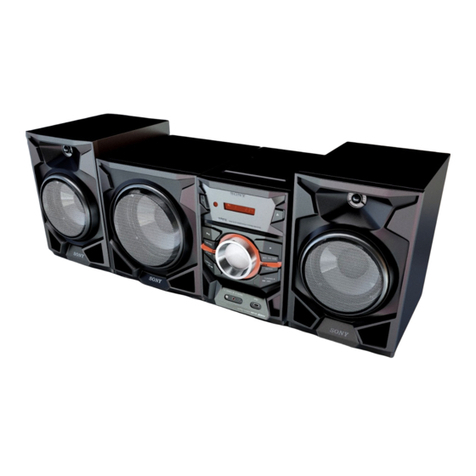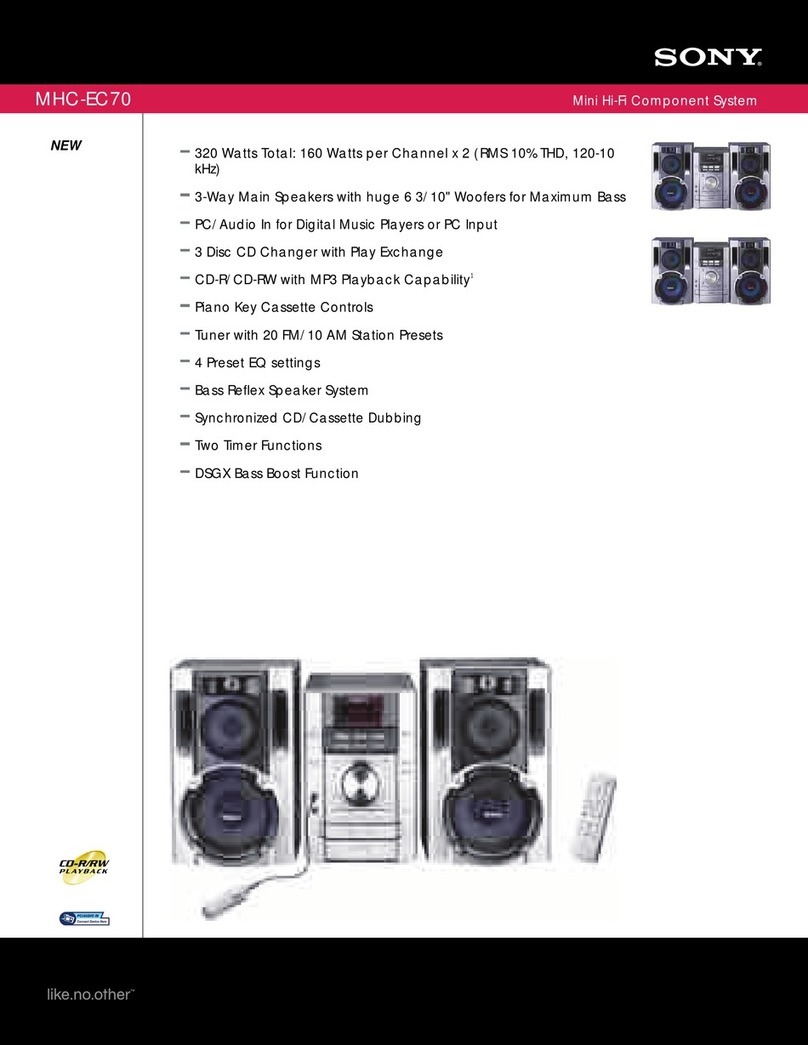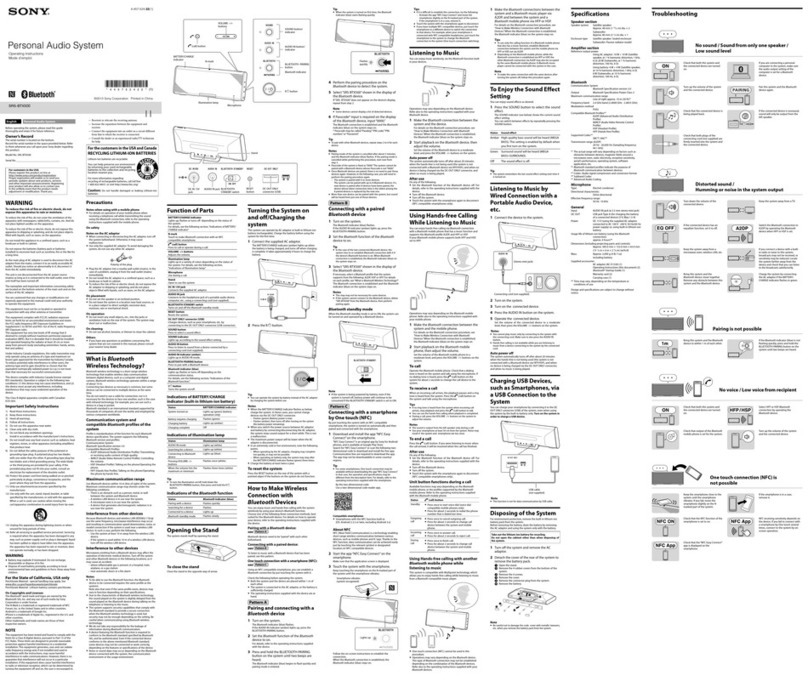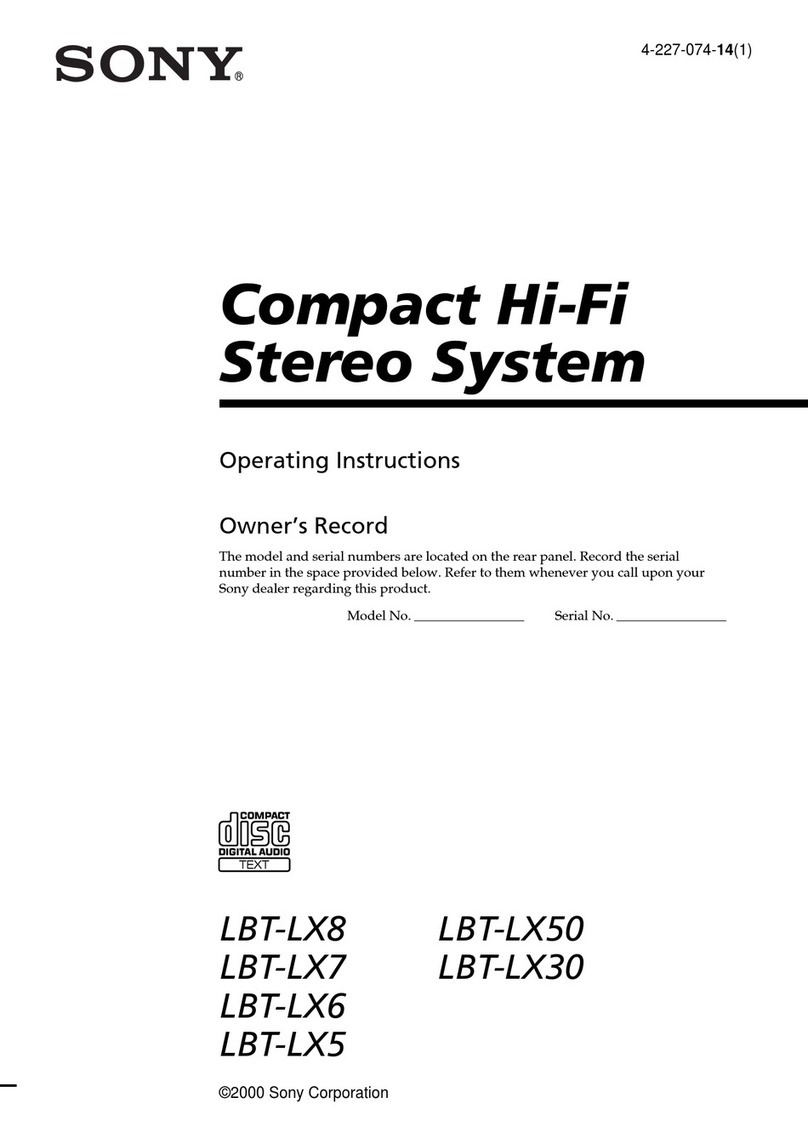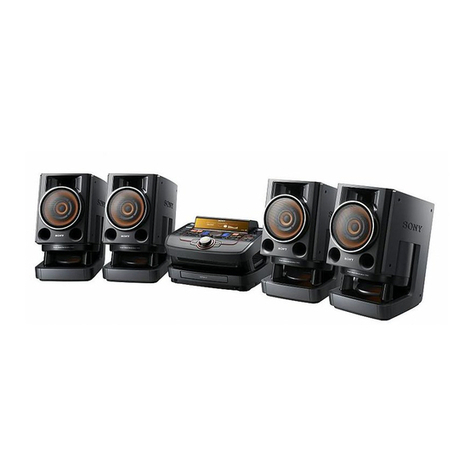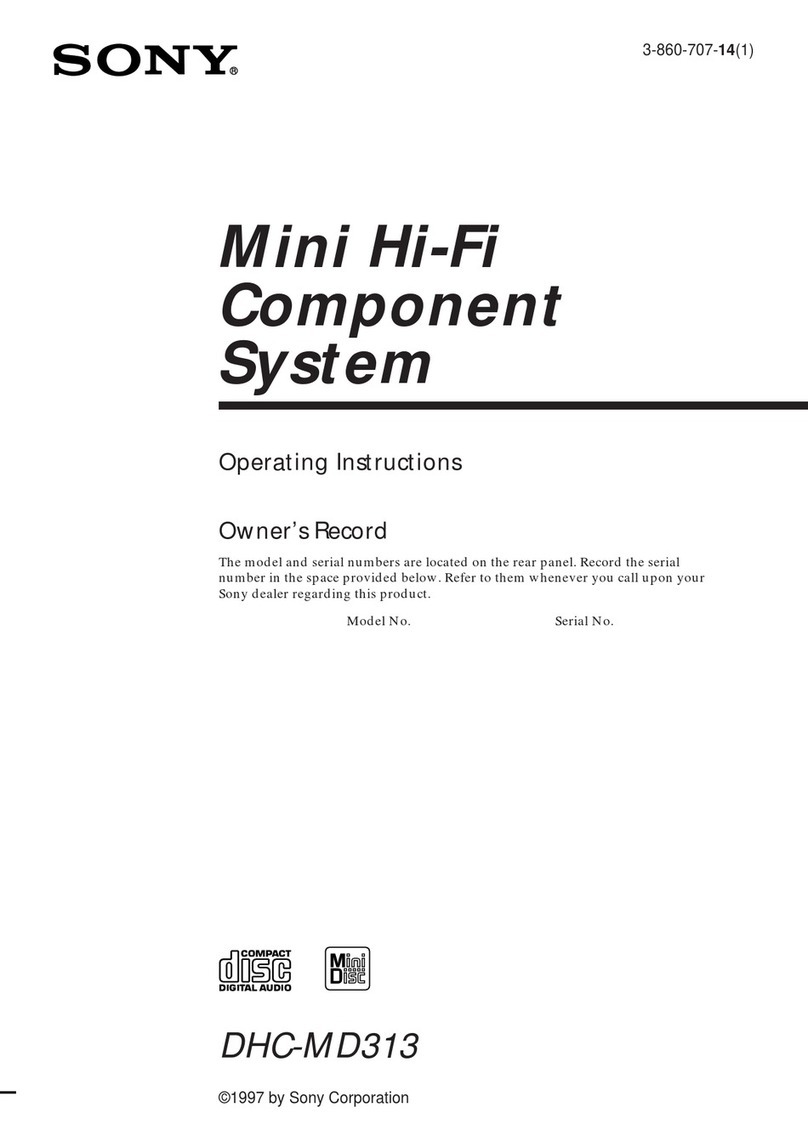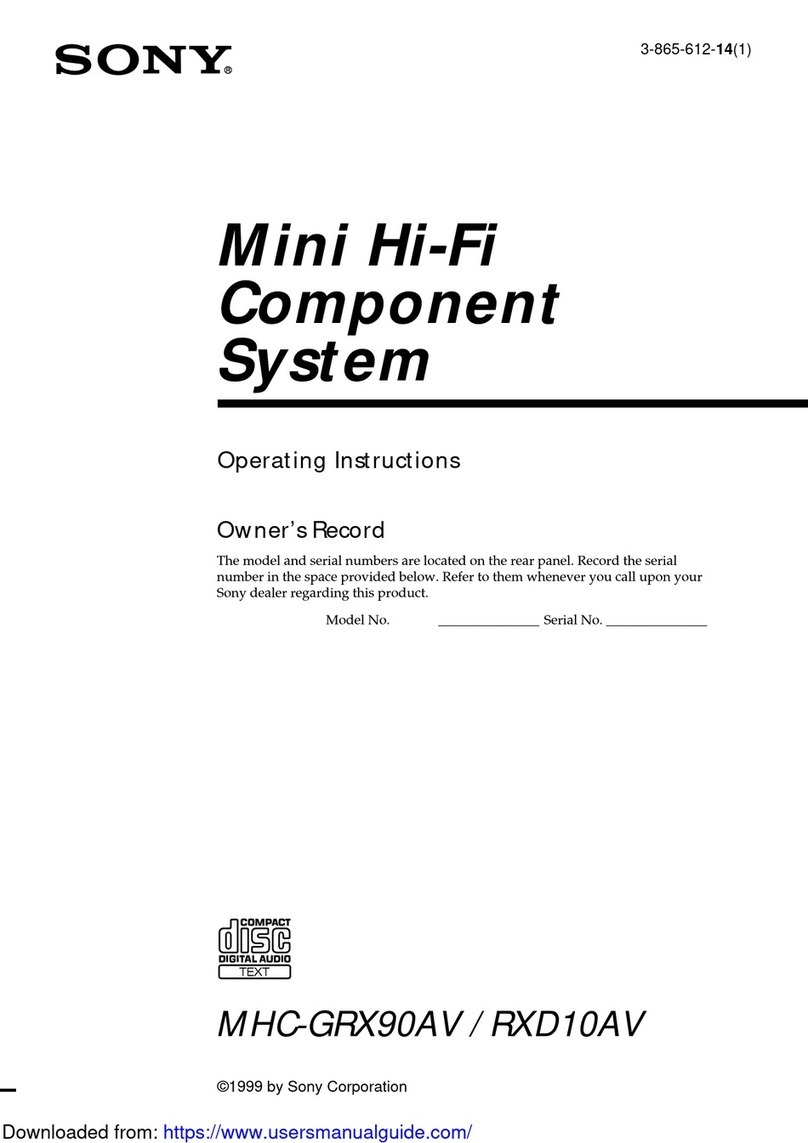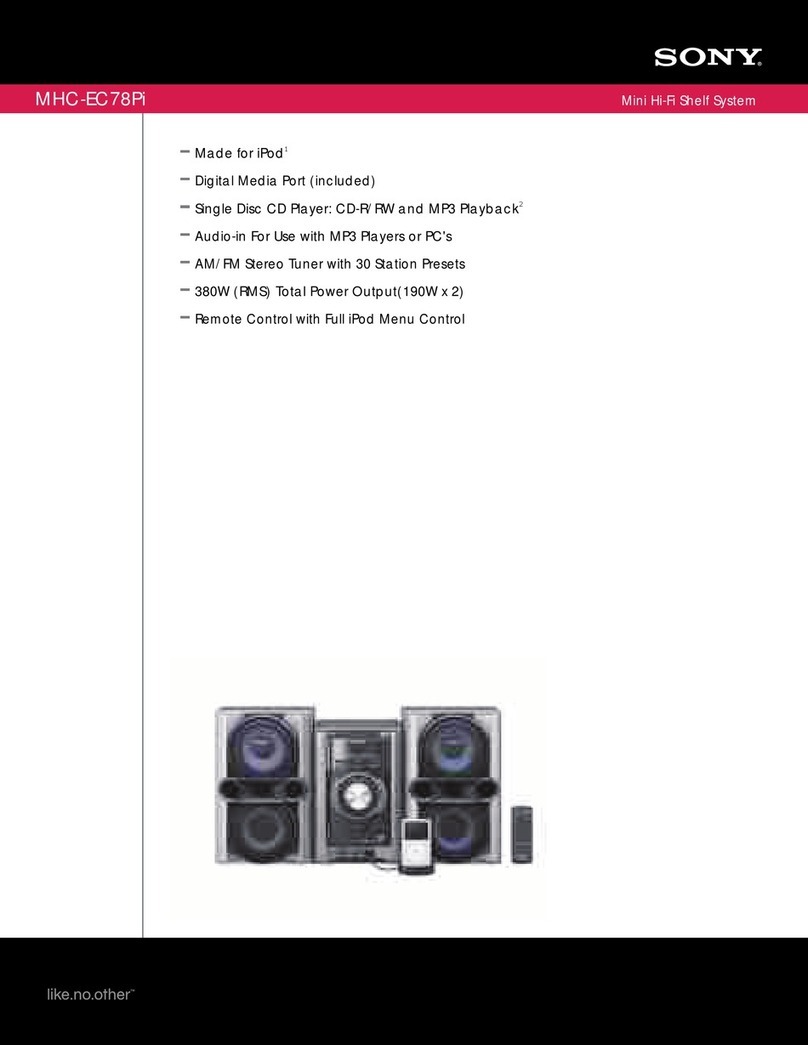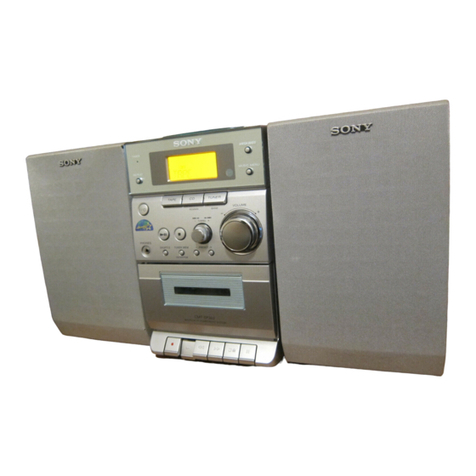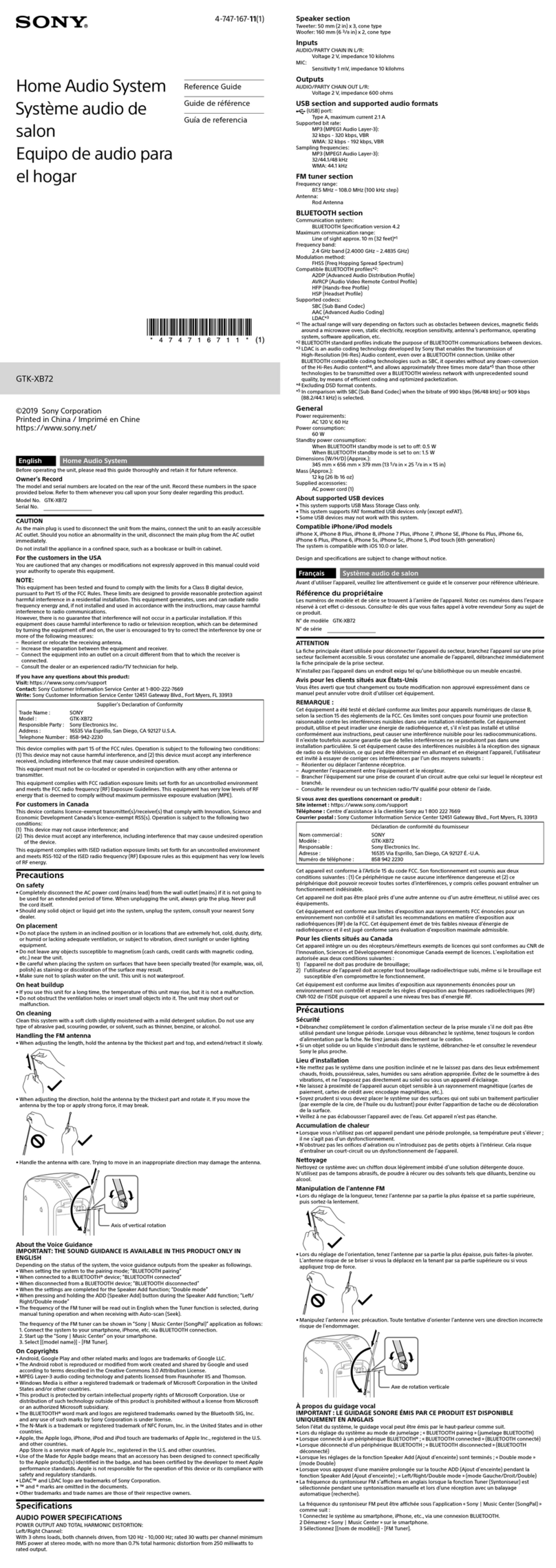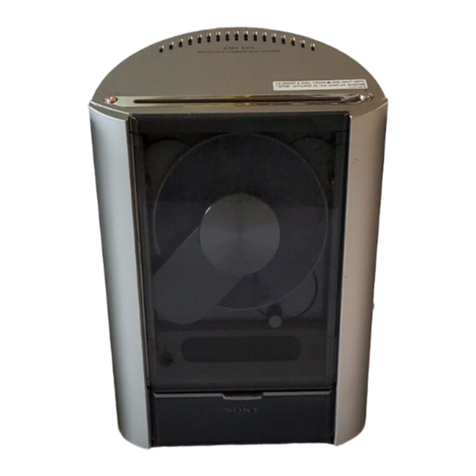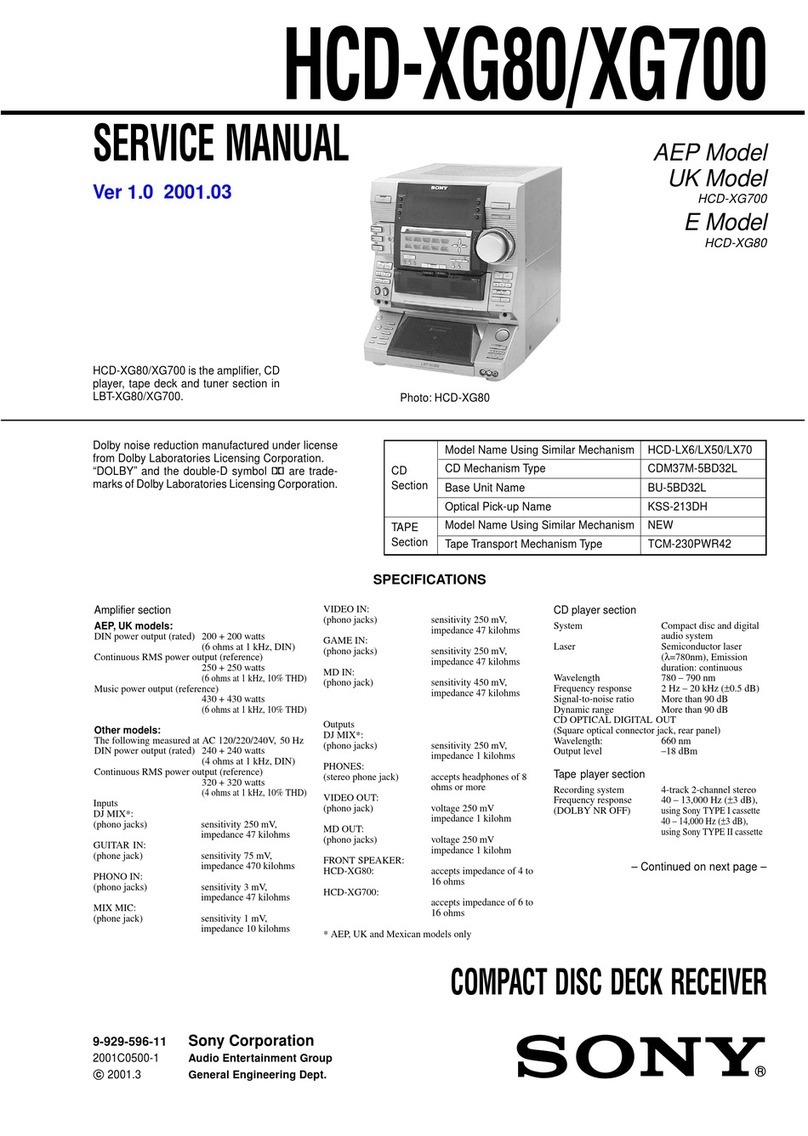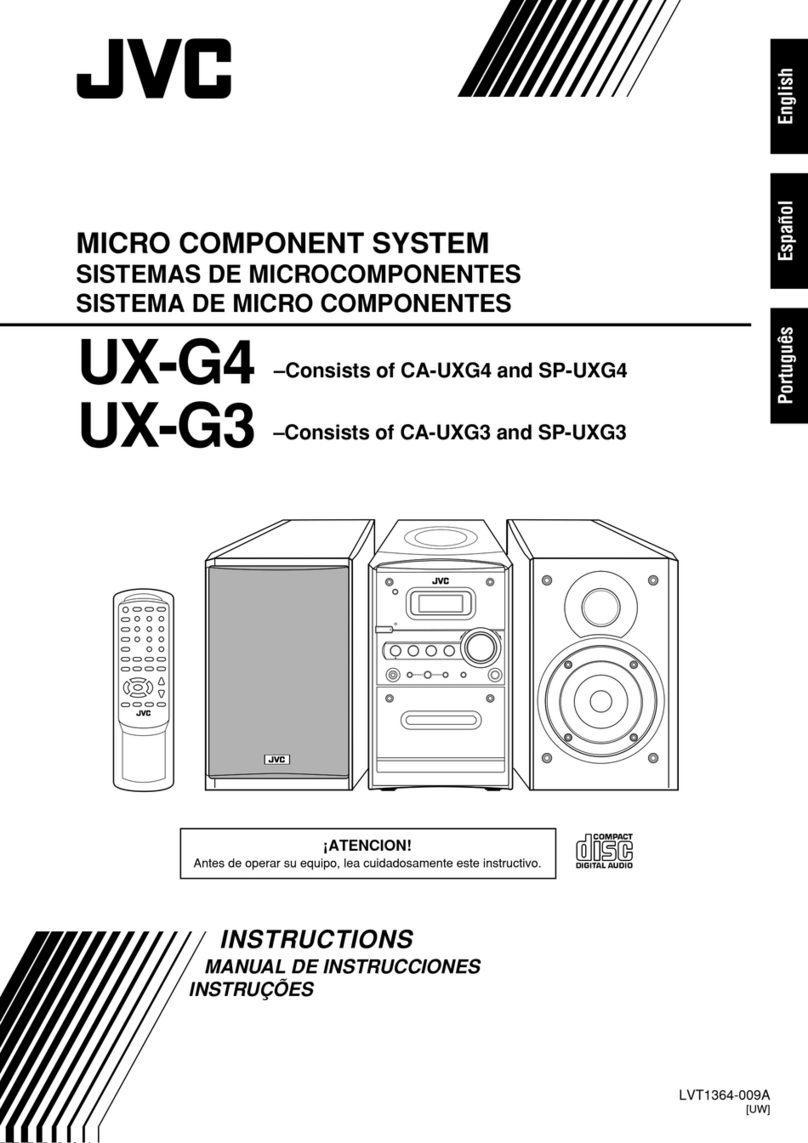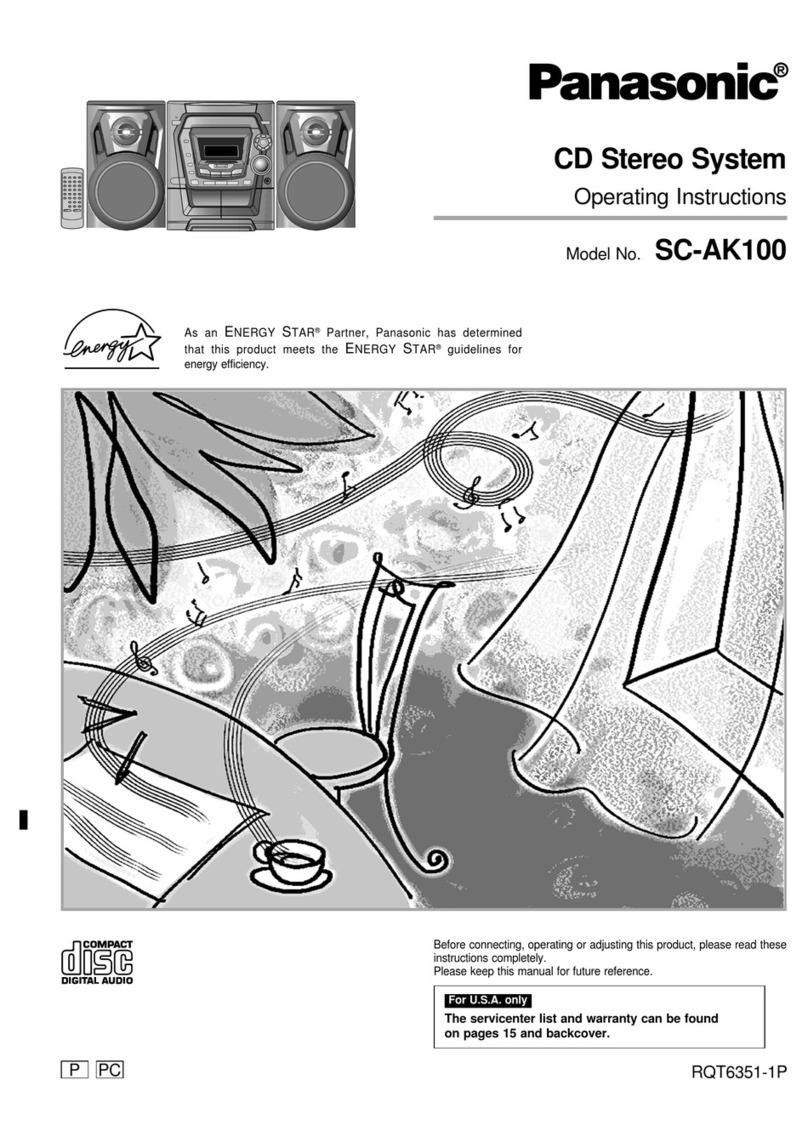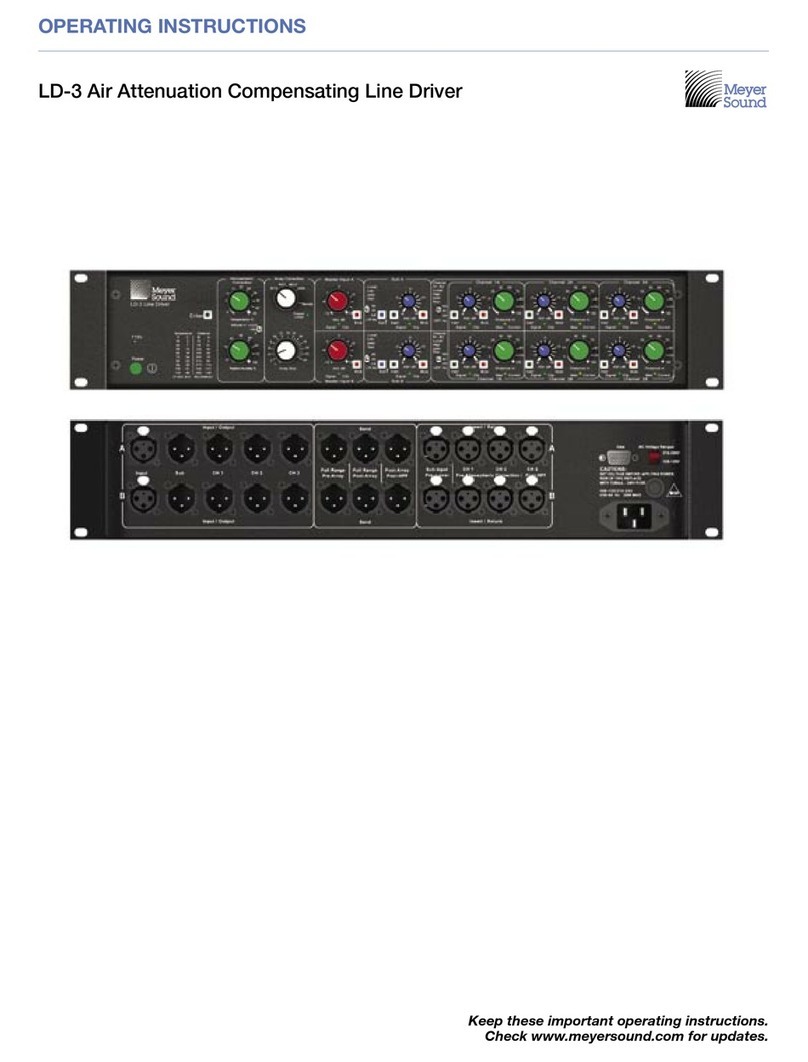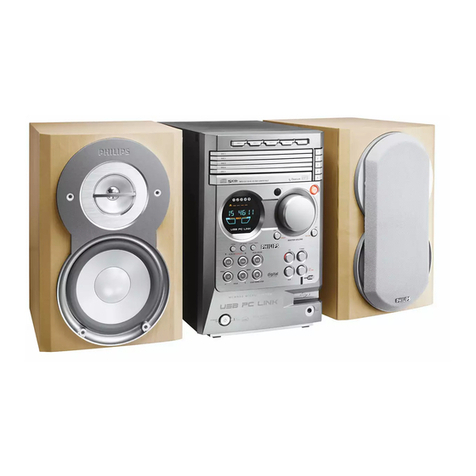
MHC-V6D
2
NOTES ON CHIP COMPONENT REPLACEMENT
• Never reuse a disconnected chip component.
• Notice that the minus side of a tantalum capacitor may be dam-
aged by heat.
CAUTION
Use of controls or adjustments or performance of procedures
other than those specified herein may result in hazardous radia-
tion exposure.
SAFETY-RELATED COMPONENT WARNING!
COMPONENTS IDENTIFIED BY MARK 0OR DOTTED LINE
WITH MARK 0ON THE SCHEMATIC DIAGRAMS AND IN
THE PARTS LIST ARE CRITICAL TO SAFE OPERATION.
REPLACE THESE COMPONENTS WITH SONY PARTS
WHOSE PART NUMBERS APPEAR AS SHOWN IN THIS
MANUAL OR IN SUPPLEMENTS PUBLISHED BY SONY.
CAUTION
he use of optical instruments with
this product will increase eye hazard.
his appliance is classied as a CLASS 1
LASER product.This marking is located
on the rear exterior.
License and Trademark Notice
is a trademark of DVD Format/
Logo Licensing Corporation.
“DVD+RW” ,“DVD-RW”, “DVD+R”,
“DVD-R”,“DVD VIDEO”, and the “CD”
logos are trademarks.
WALKMAN® and WALKMAN® logo
are registered trademarks of Sony
Corporation.
MPEG Layer-3 audio coding
technology and patents licensed
from Fraunhofer IIS and Thomson.
Windows Media is either a
registered trademark or trademark
of Microsoft Corporation in
the United States and/or other
countries.
This product is protected by
certain intellectual property rights
of Microsoft Corporation. Use or
distribution of such technology
outside of this product is prohibited
without a license from Microsoft or
an authorized Microsoft subsidiary.
This system incorporates Dolby*
Digital.
* Manufactured under license from
Dolby Laboratories.Dolby and the
double-D symbol are trademarks of
Dolby Laboratories.
The BLUETOOTH® word mark and
logos are registered trademarks
owned by Bluetooth SIG, Inc. and
any use of such marks by Sony
Corporation is under license. Other
trademarks and trade names are
those of their respective owners.
The N Mark is a trademark or
registered trademark of NFC Forum,
Inc. in the United States and in other
countries.
Android™ is a trademark of Google
Inc.
Google Play™ is a trademark of
Google Inc.
iPhone and iPod touch are
trademarks of Apple Inc., registered
in the U.S. and other countries. App
Store is a service mark of Apple Inc.
“Made for iPod” and “Made for
iPhone” mean that an electronic
accessory has been designed
to connect specically to iPod
or iPhone, respectively, and has
been certied by the developer
to meet Apple performance
standards. Apple is not responsible
for the operation of this device
or its compliance with safety and
regulatory standards. Please note
that the use of this accessory with
iPod or iPhone may aect wireless
performance.
THIS PRODUCT IS LICENSED UNDER
THE MPEG-4 VISUAL PATENT
PORTFOLIO LICENSE FOR THE
PERSONAL AND NON-COMMERCIAL
USE OF A CONSUMER FOR
(i) ENCODING VIDEO IN
COMPLIANCE WITH THE MPEG-4
VISUAL STANDARD (“MPEG-4
VIDEO”)
AND/OR
(ii) DECODING MPEG-4 VIDEO THAT
WAS ENCODED BY A CONSUMER
ENGAGED IN A PERSONAL AND
NON-COMMERCIAL ACTIVITY
AND/OR WAS OBTAINED FROM
A VIDEO PROVIDER LICENSED TO
PROVIDE MPEG-4 VIDEO.
NO LICENSE IS GRANTED OR SHALL
BE IMPLIED FOR ANY OTHER
USE.ADDITIONAL INFORMATION
INCLUDING THAT RELATING TO
PROMOTIONAL, INTERNAL AND
COMMERCIAL USES AND LICENSING
MAY BE OBTAINED FROM MPEG LA,
L.L.C.
HTTP://WWW.MPEGLA.COM
All other tr ademarks are trademarks
of their respective owners.
Self-diagnosis Function
When letters/numbers appear
on the display
When the self-diagnosis function
is activated to prevent the system
from malfunctioning,a service
number appears on the TV screen.
he service number consists of an
alphabet and numerals (e.g. C 13 50).
See the following table for the cause
and corrective action.
First 3
characters of
the service
number
Cause and corrective
action
C 13 This disc is dirty.
Clean the disc with a
soft cloth.
C 31 The disc is not inserted
correctly.
Restart the system,
then re-insert the disc
correctly.
E XX
(XX is a
number)
To prevent a
malfunction,the system
has performed the
self-diagnosis function.
Contact your nearest
Sony dealer or local
authorized Sony service
facility and give the
5-character service
number.
Example:E 61 10
